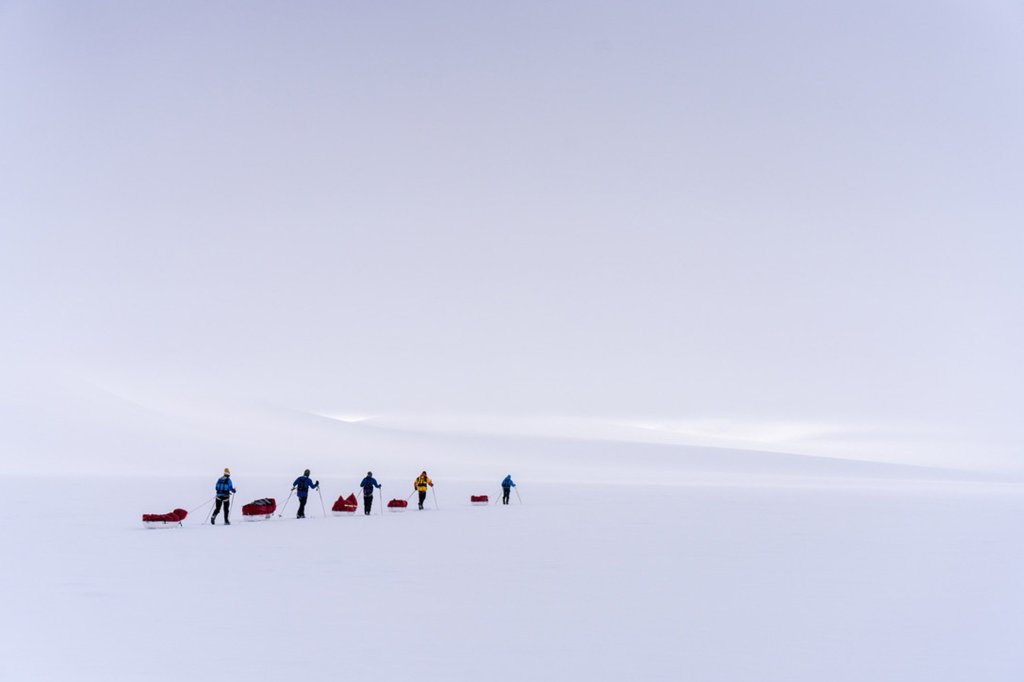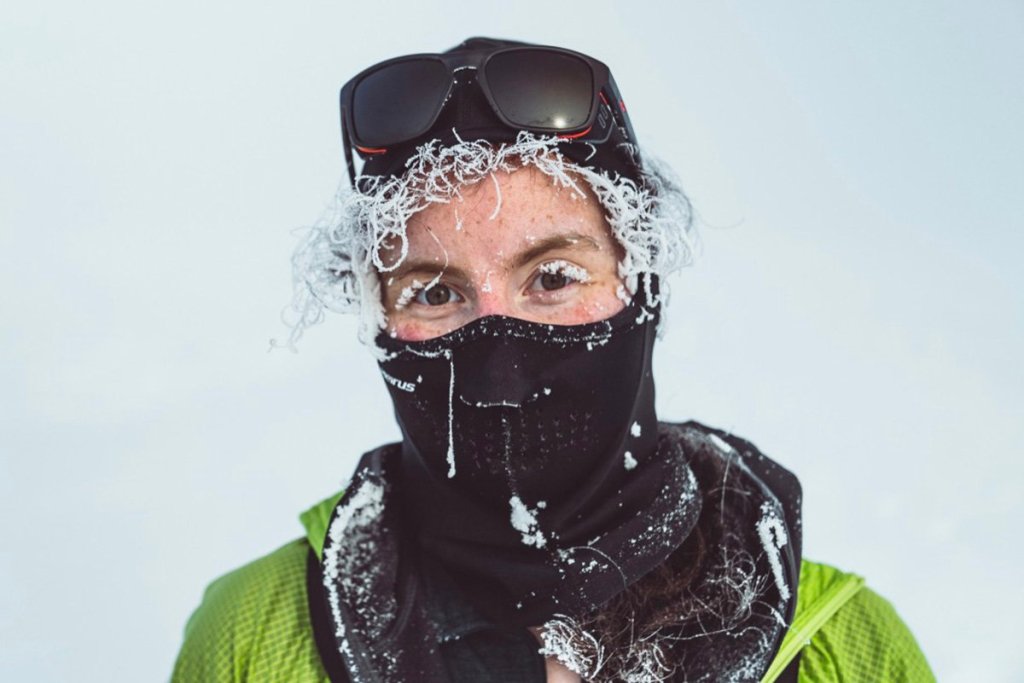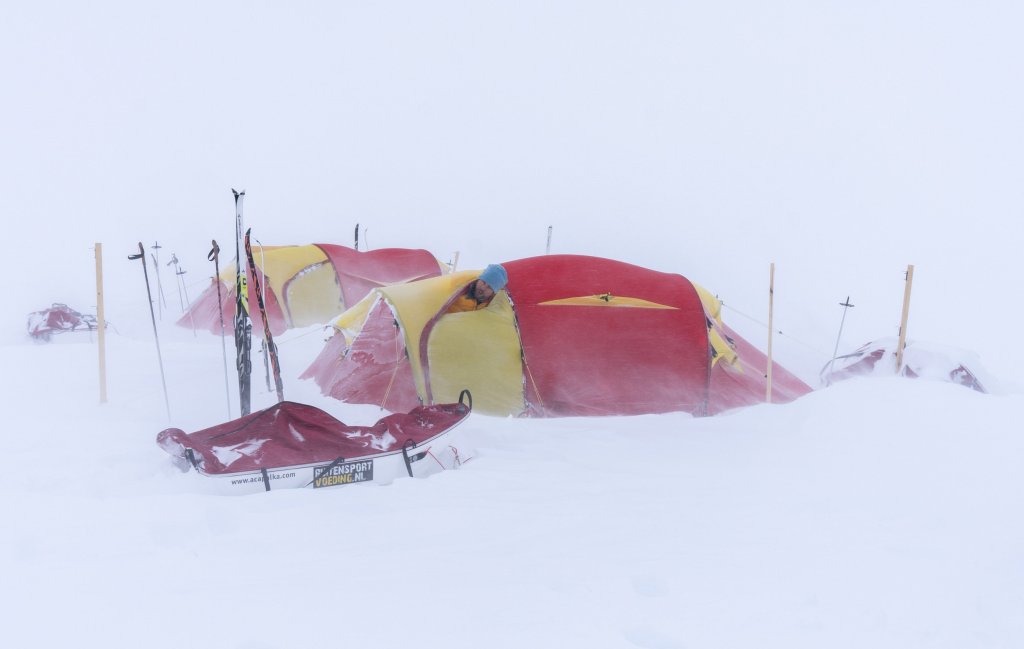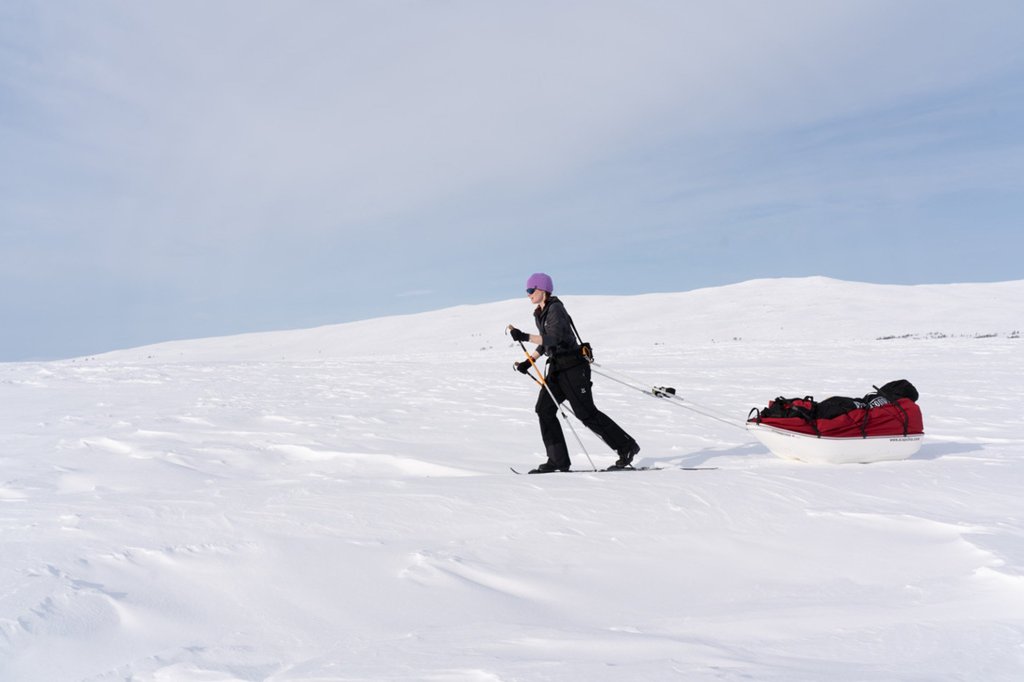
If all has gone according to plan, 38-year-old Susana Hancock should be more than halfway through a 600-mile trek in one of the planet’s most remote and hostile environments to document the rapid retreat of the Greenland ice sheet.
The small, one-pound sensors she is installing as she skis across the world’s second-largest polar ice cap will measure greenhouse gas emissions and ice thickness. That data is critical for global climate monitoring in a region that is “very poorly monitored in real time,” Hancock said during an interview last month before leaving for Tasiilaq, an island in East Greenland, where she was set to begin her trip a week later.
Hancock has built a career at the intersection of science and Arctic policy. She lives in Freeport and works at the International Cryosphere Climate Initiative, an organization with headquarters in Vermont and Stockholm, Sweden, that is focused on bringing the work of those who study the frozen regions of the world directly to global climate policymakers.
Her job is to translate complex data into a language that can drive political action. The physical act of skiing across a frozen landscape gives her an intimate understanding of the changes taking place.

“There’s a lot of hard times, but the Arctic is an area that’s absolutely beautiful, and it’s changing incredibly rapidly,” Hancock said. “To be able to see it, document it and share it with other people? It’s an incredible privilege.”
She uses the latest research and observations from her own expeditions to help policymakers understand connections, like how the fast-warming, fast-rising waters of the Gulf of Maine are directly linked to the melting of the Greenland ice sheet she is currently crossing.
“The goal of crossing Greenland is ambitious, and where Susana is combining her science and outdoor experience and climate advocacy work,” said Bowdoin anthropology professor Susan Kaplan, who is also the director of the university’s Peary-MacMillan Arctic Museum and Arctic Studies Center, “she appears to be using (it) as a way to excite people.”
GRUELING, REWARDING EXPEDITIONS
Hancock’s expedition in Greenland began on Aug. 14 and is a re-creation of the historic 1888 expedition led by Fridtjof Nansen, the first explorer to cross Greenland. Hancock and her four Dutch teammates hope to travel Nansen’s original route.
Hancock’s last major expedition was a 200-mile journey on skis across Svalbard, a Norwegian archipelago in the Arctic Ocean in 2022. It was an attempt to re-create a well-documented 1872 North Pole attempt.
She said the trek offered a stark, first-hand lesson in climate change. The original explorers failed because they couldn’t get through the thick sea ice, but Hancock’s team had the opposite problem: They ran out of it.
About 300 miles shy of the pole, the team hit open ocean where there should’ve been a solid, frozen surface to cross. The warming temperatures have made the ice less stable and created more crevasses, massive cracks that form as glaciers weaken and move.

Hancock, who attended the Waynflete School in Portland, developed an early fascination with the polar regions, inspired by the Arctic Museum at Bowdoin College and visits to Eagle Island, the summer home of Robert Peary, a Bowdoin alum who claimed in 1909 to have been the first to reach the North Pole.
“I’ve been in love with the ice since childhood,” Hancock said.
Each expedition is grueling and rewarding in its own way, Hancock said. And she is always dreaming up new ways to get back to the ice.
To prepare, Hancock, a world-class rower, will spend months running, lifting weights, dragging three 50-pound truck tires around Freeport as a proxy for her 200-pound supply sled, and practicing her marksmanship, should the need arise in polar bear territory.

She girds herself for the silence and the hallucinations that can occur after days of walking across ice in near whiteout conditions, tethered by rope to a person in front of you, hoping no one on the team steps into a crevasse or stumbles upon a polar bear.
Hancock has not seen a polar bear on any of her expeditions or training trips, although, she said, she has found their tracks near her tent. She has had frostbite, but has never fallen into a crevasse. A tentmate once did, she said, but he was able to catch himself.
‘NOT JUST A JOYRIDE’
Hancock’s current journey is set to end on Sept. 19 on the west coast of Greenland, assuming they aren’t delayed by route changes or weather. Until then, the team is out of reach, making use of a satellite phone only in case of extreme emergency.
For Hancock, these personal observations serve as a powerful tool in her work. The experience of seeing an ice sheet change its appearance in a single day or a landscape become uncrossable overnight is a compelling argument for immediate action, she said.
“That’s gonna help me in my work with the policymakers … to convince them that this is something that requires immediate action,” Hancock said the week before she left.

Hancock views her expeditions as a commitment to science, gathering data that is too expensive and carbon-intensive for others to collect, while bearing personal witness to the accelerating pace of climate change.
She recalled a moment on her last trip when, hundreds of miles from any populated settlement, she discovered human trash and what many people call “forever chemicals,” per- and polyfluoroalkyl substances that never break down, in the pristine snow that she melted for drinking water.
“It not just a joyride for me,” Hancock said. “As a climate person, I want to be a part of the solution.”

We invite you to add your comments. We encourage a thoughtful exchange of ideas and information on this website. By joining the conversation, you are agreeing to our commenting policy and terms of use. More information is found on our FAQs. You can modify your screen name here.
Comments are managed by our staff during regular business hours Monday through Friday as well as limited hours on Saturday and Sunday. Comments held for moderation outside of those hours may take longer to approve.
Join the Conversation
Please sign into your CentralMaine.com account to participate in conversations below. If you do not have an account, you can register or subscribe. Questions? Please see our FAQs.